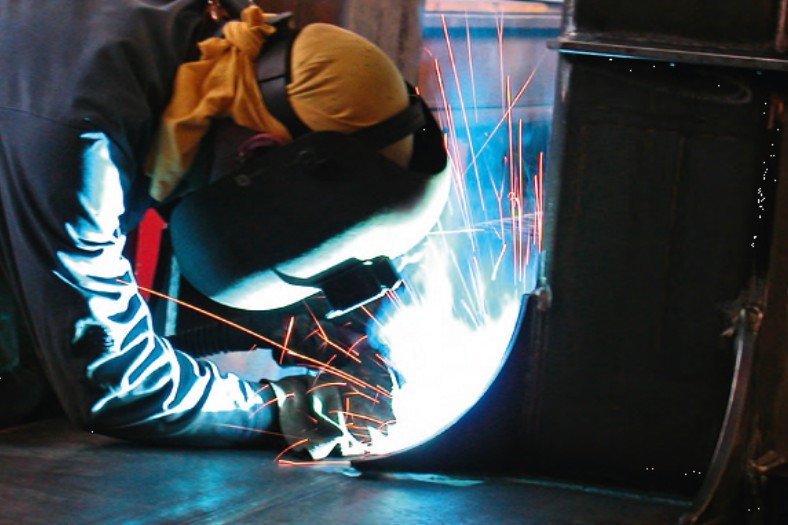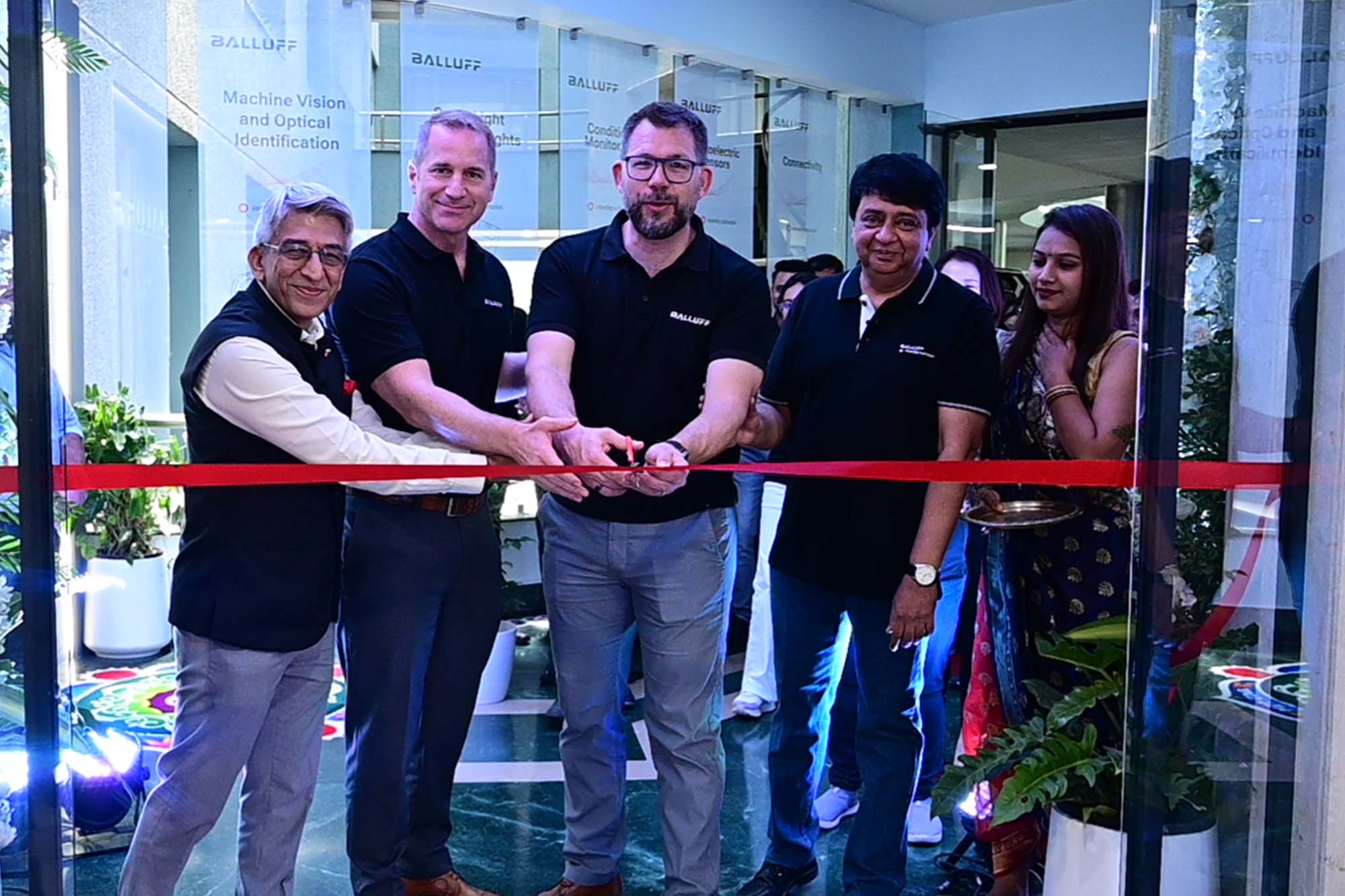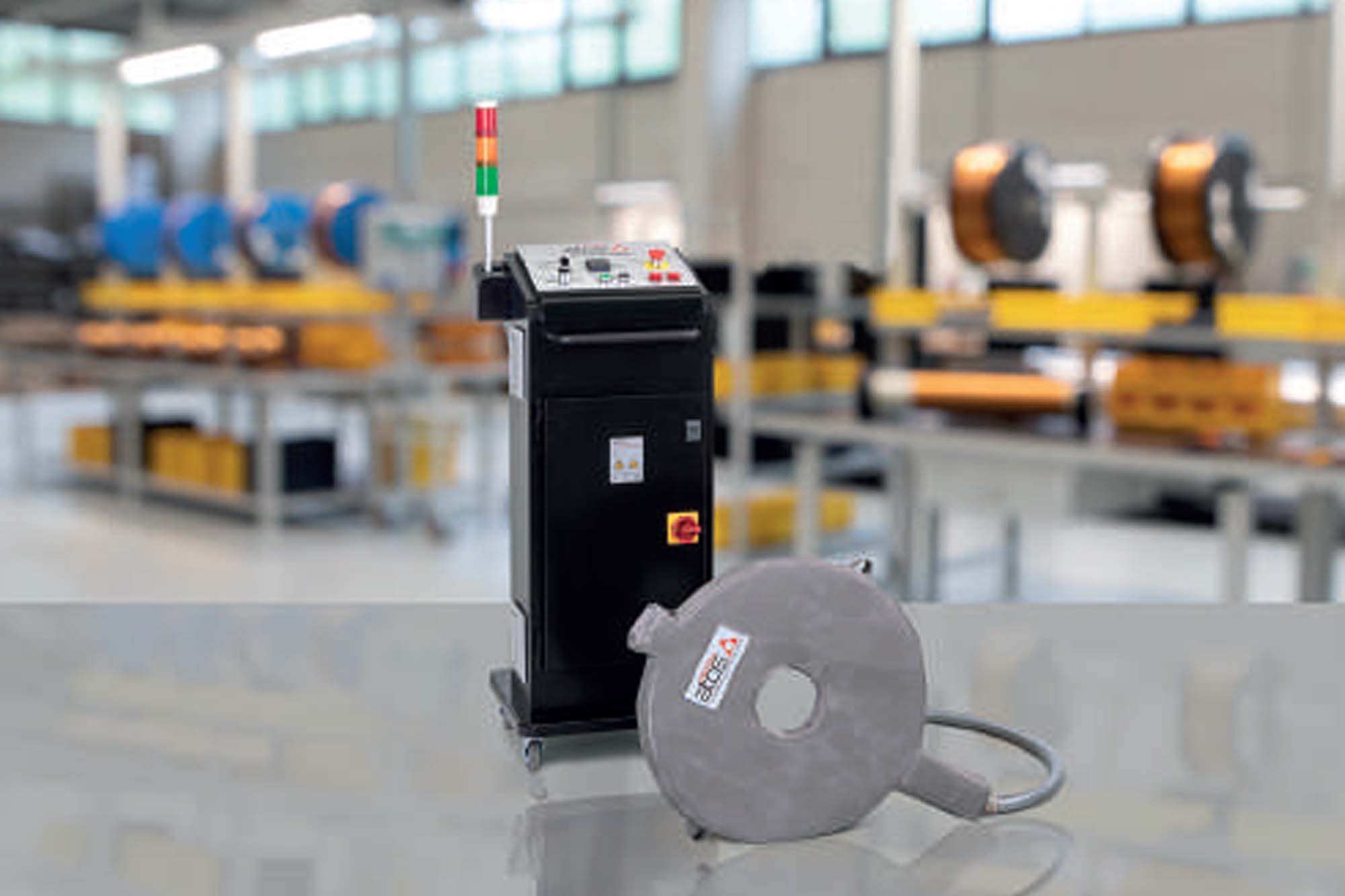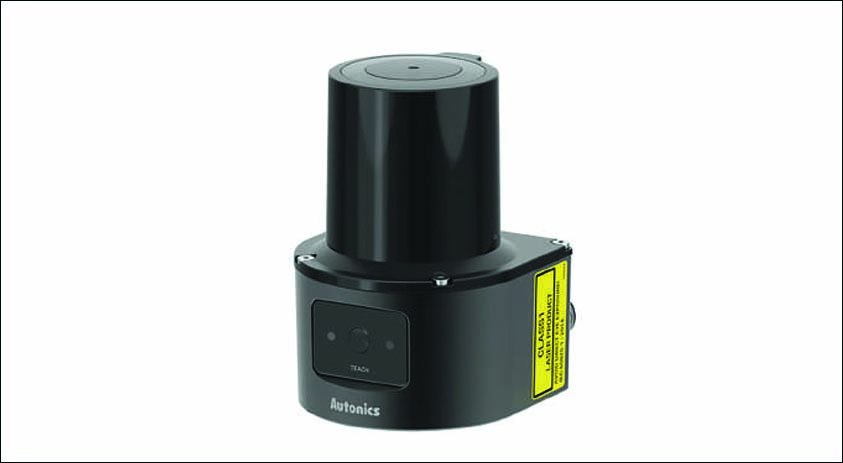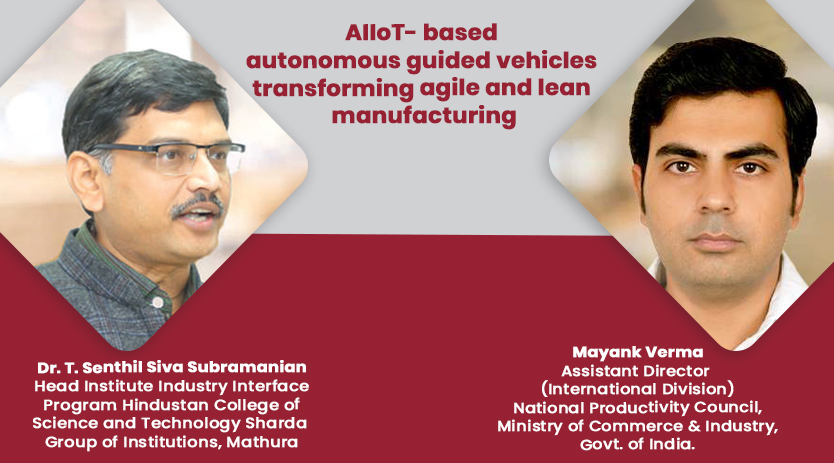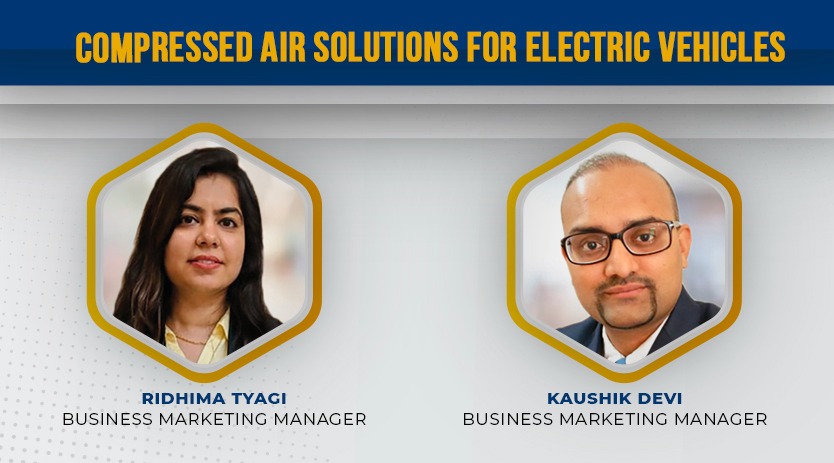Pioneering technology with focus in railways
By OEM Update Editorial December 16, 2019 10:59 am IST
The plasma cutters get through a steel plate several centimetres thick with all the precision of a swiss watch. The dazzling spot of light brightens up the slightly dated industrial building. It moves along its computer controlled path apparently effortlessly. An employee with black protective goggles monitors the operation. After just a few minutes, the plasma cutter has cut out a work-piece. It resembles a bent human arm. It’s a relatively small part but it will soon become part of something big in the adjacent frame production plant.
That might be a universal tamper, a track construction train or a ballast regulator, high-tech in XL format. Where exactly the work-piece will end up is precisely planned by the engineers – in an office building 200 metres away as the crow files. M-A-T-I-S-A can be seen in large black capital letters on the façade. The specialist in construction machinery for all aspects of laying and preparing tracks the full company name is Matériel Industriel S.A. – is based in the Swiss town of Crissier. The site is just six kilometres northwest of Lausanne, in an idyllic setting, surrounded by craggy mountain peaks and with the sun reflecting from the surface of Lake Geneva. “Quality, reliability, flexibility and know-how have been our strengths for more than 70 years”, said Patrice Mesnage, Technical Purchasing Manager.
Welding of the special designs requires experience that has prepared the way for rail transport worldwide and ensured its safety has been produced here since 1945. “Quality, reliability, flexibility and know-how have been our strengths for more than 70 years”, says Technical Purchasing Manager Patrice Mesnage. The 61-year old peers mischievously over the rim of his glasses. The company has an unrivalled portfolio.
The third floor of the office building is the brain of the whole operation. Mechanical, hydraulic and electrical engineering teams come up with the ideas that will later be made a reality in the production buildings. The detailed work that this entails is illustrated by a few figures. In a track construction train, for example, a total of up to ten kilometres of cables are installed. “There are also around 15,000 connections”, adds Marc Vuillemier. As a result, according to the head of electrical engineering development, this kind of project can involve something approaching 500 hours of planning work. Particularly as different standards and regulations have to be complied with for each machine, depending on the country it will be used in. Cables are crucially important as they are used to control numerous concurrent processes with perfect precision. “A track construction train can lay 600 to 800 metres of track per hour – accurate to the millimetre”, Mesnage explains. “The sleepers are brought forward from the attached wagons using a crane, where they are put in place and the tracks are then laid on top of them. This all happens as a continuous flow.” This means that the mechanics, hydraulics and sensors are constantly communicating with one another. The cables have to operate reliably and, on top of that, have to satisfy specific requirements in terms of fire protection and ease of installation.
In the hall, next to the plasma cutter an employee is now welding the workpiece into a steel frame, which are over 14 metres long and two metres high. It is lying on its side, enabling the work to be performed ergonomically. Sparks fly. There’s a smell of burning. A flex screeches. There are no conveyor belts here and no robots. Precision manual work and flexibility are the order of the day, as every machine is a one-off, adapted to the customer’s specific requirements. “This welding work demands a huge amount of experience. There are not many specialists who can do it”, says Mesnage, indicating a seam about 60 centimetres in length. Every seam has to be perfect, as ultimately the finished machine weighs around 80 tons. The hall is around 50 metres long and currently contains four frames. On average the time from a contract being signed to delivery of a finished machine is 18 months. Between 20 and 30 machines leave the plant every year. Each one is unique, equipped with the very latest technology and designed for a service life of more than 30 years. As a consequence, suppliers also have to guarantee to maintain the availability of the roducts they install for this period. “We depend on reliable partnerships”, says Mesnage. That’s one of the reasons why Matisa decided to collaborate with LAPP just over a year ago. Another is flexibility – in terms of both the company and its products. The importance of the cables being both robust and flexible to use is demonstrated by the wiring carried out in the electrical workshop and in final assembly. Blaise Schopfer, the manager of the electrical workshop, shows how the cables are installed inside the control cabinet and how each cabinet in the train is connected. Although the machine itself is huge, when it comes to the cables space is always at a premium. All kinds of curves and corners have to be overcome. It would be absolutely impossible with rigid cables. They need to be as thin but also as powerful as possible, whether they have a single or multiple cores. According to Schopfer, the wiring of a control cabinet alone takes four to five weeks. While LAPP has been active in the railway sector in the Asia Pacific (APAC) region for 14 years, the company only ventured into the field three years ago in Europe. The Stuttgart-based experts have adapted two existing products specifically for Matisa to cope with requirements in railway technology: the ÖLFLEX® Classic 110 HFS and 115 CHFS. As the abbreviations suggest, these are halogen-free versions that comply with all fire protection standards. Thanks to the thin-walled cable and their flexible cores, they can be installed easily, as demonstrated.
The factory site covers 33,730 square metres. Matisa has a total of 8 subsidiaries around the world.
The company works with around 1000 suppliers. We depend on a reliable partnership with suppliers.
Patrice Mesnage The precision plasma cutter gets through the thickest steel planning work. Particularly as different standards and regulations have to be complied with for each machine, depending on the country it will be used in. Cables are crucially important as they are used to control numerous concurrent processes with perfect precision. “A track construction train can lay 600 to 800 metres of track per hour – accurate to the millimetre”, Mesnage explains. “The sleepers are brought forward from the attached wagons using a crane, where they are put in place and the tracks are then laid on top of them. This all happens as a continuous flow.” Which means that the mechanics, hydraulics and sensors are constantly communicating with one another? The cables have to operate reliably and, on top of that, have to satisfy specific requirements in terms of fire protection and ease of installation.
Another is flexibility – in terms of both the company and its products. The importance of the cables being both robust and flexible to use is demonstrated by the wiring carried out in the electrical workshop and in final assembly.
Blaise Schopfer, the manager of the electrical workshop, shows how the cables are installed inside the control cabinet and how each cabinet in the train is connected. Although the machine itself is huge, when it comes to the cables space is always at a premium. All kinds of curves and corners have to be overcome. It would be absolutely impossible with rigid cables. They need to be as thin but also as powerful as possible, whether they have a single or multiple cores. According to Schopfer, the wiring of a control cabinet alone takes four to five weeks. While LAPP has been active in the railway sector in the Asia Pacific (APAC) region for 14 years, the company only ventured into the field three years ago in Europe.
The Stuttgart-based experts have adapted two existing products specifically for Matisa to cope with requirements in railway technology: the ÖLFLEX® Classic 110 HFS and 115 CHFS. As the abbreviations suggest, these are halogen-free versions that comply with all fire protection standards. Thanks to the thin-walled cable and their flexible cores, they can be installed easily, as demonstrated. The factory site covers 33,730 square metres. Matisa has a total of 8 subsidiaries around the world. The company works with around 1000 suppliers. We depend on a reliable partnership with suppliers. The precision plasma cutter gets through the thickest steel.
Focus railway technology
Electrical engineer Blaise Schopfer demonstrates the complex wiring of a train “Something else we really value about our collaboration is the delivery terms. Because we produce customised machines, it is very common for modifications to come up during production. This means we then have to order subsequent cables at relatively short notice”, Mesnage explains. Matisa purchases the products from LAPP Volland, the Swiss LAPP subsidiary. Like the company headquarters, they maintain a constant stock of special cables.This enables the cable manufacturer to not only deliver quickly – if necessary within 48 hours – but also with no minimum order quantity. This is crucial for specialist companies that do not use large-scale series production. As Thorsten Grünberg, Market Manager Rolling Stock at LAPP, explains: “Cables are normally produced to order, so only after the customer has actually ordered them. Every time a line is started up, the first 150 to 200 metres of cable cannot be used.” To amortise the high setup costs and times, a manufacturer has to then produce a certain quantity. This results in the high minimum order quantities that are normal elsewhere in the industry.
Matisa itself also maintains a small intermediate warehouse in an additional building. Drums containing various cables as a direct supply for production take up an entire wall. This is also where the driver’s cabs for the machines are pre-assembled. Final assembly, in the building opposite, is where all the parts finally come together to create the finished product.
Employees screw things together, plug them in, connect them, talk – and joke. Matisa emphasises the importance of a good working atmosphere. Employee turnover is very low. This is proved by the example of two colleagues who recently retired after forty years with the company. During this time, they have helped create numerous Matisa innovations. At one end of the building, a bright yellow prototype is waiting to be completed: it’s a universal tamper with the code UC – U for universal, C for continuous. While conventional tampers have to keep stopping to compress the ballast bed or correct the track geometry, a variable suspended tamper moving against the direction of travel allows a continuous process to be achieved. As a result it runs more quickly and cuts fuel consumption. The next generation in high-tech, and the process of creating this Matisa machine started with a steel plate under the plasma cutter. A track construction train can lay up to 800 metres of track per hour. The trains weigh 80 tons or more. Matisa products have a service life of more than 30 years. Up to 500 metres long and with a wealth of high-tech equipment on board, they lay sleepers and rails on new lines in a continuous flow. Track construction trains If the track geometry requires correction, or the ballast has to be compressed, rail operators worldwide depend on Matisa tampers. For example, they are used for filling up sleeper bays, ploughing out surplus ballast and sweeping clean the tracks.
Up to 500 metres long and with a wealth of high-tech equipment on board, they lay sleepers and rails on new lines in a continuous flow. Track construction trains if the track geometry requires correction, or the ballast has to be compressed, rail operators worldwide depend on Matisa tampers. For example, they are used for filling up sleeper bays, ploughing out surplus ballast and sweeping clean the tracks.
For ballast and track in any dimensions Reliability and precision are the key features of Matisa products. No matter whether they are transport wagons for points, track inspection vehicles, ballast regulators, track renewal trains, track construction trains, tampers or ballast cleaners. In these steel giants, every detail is crucial.
The high-tech trains, for example, pick up the ballast stones, check their edges, sort out those that are blunt and then fill up the bed with fresh stones. When it comes to ballast, small differences can have a big impact. Only stones with fracture edges can interlock, which creates a uniformly loadable and cushioning structure, providing a stable base for sleepers and rails. The company’s most important products include plain line and universal tampers. Customers worldwide use them to correct the track geometry and compress the ballast.
The size comparison below shows examples from the diverse portfolio. You can find a complete Overview at www.matisa.ch/en.
Cookie Consent
We use cookies to personalize your experience. By continuing to visit this website you agree to our Terms & Conditions, Privacy Policy and Cookie Policy.



